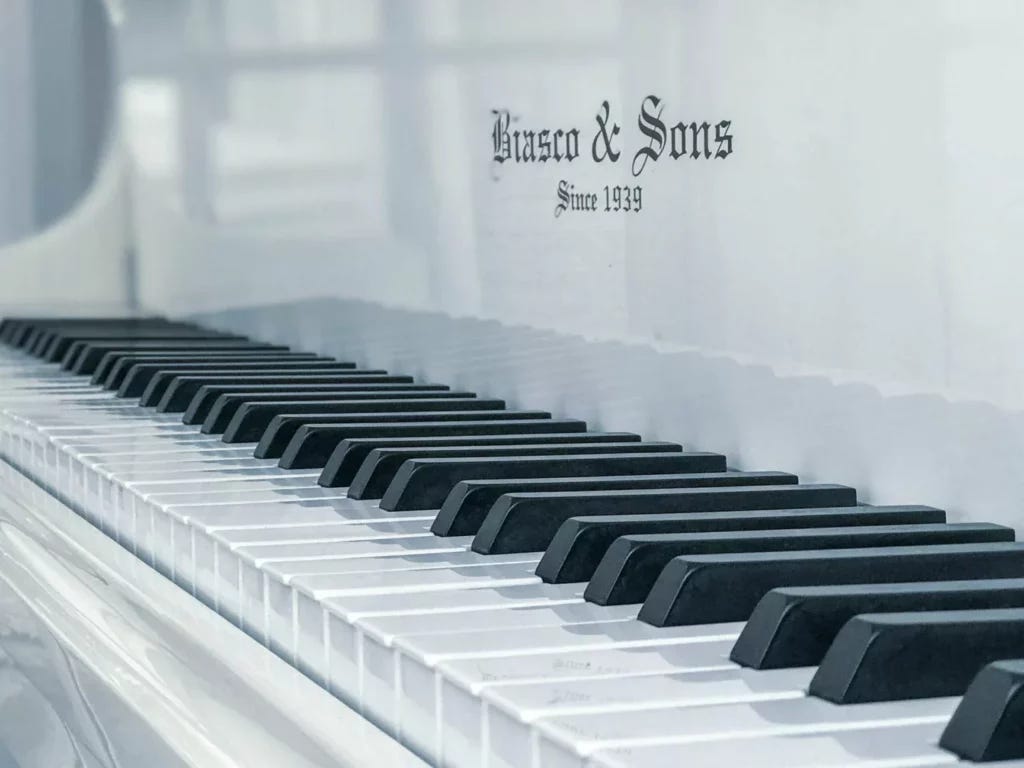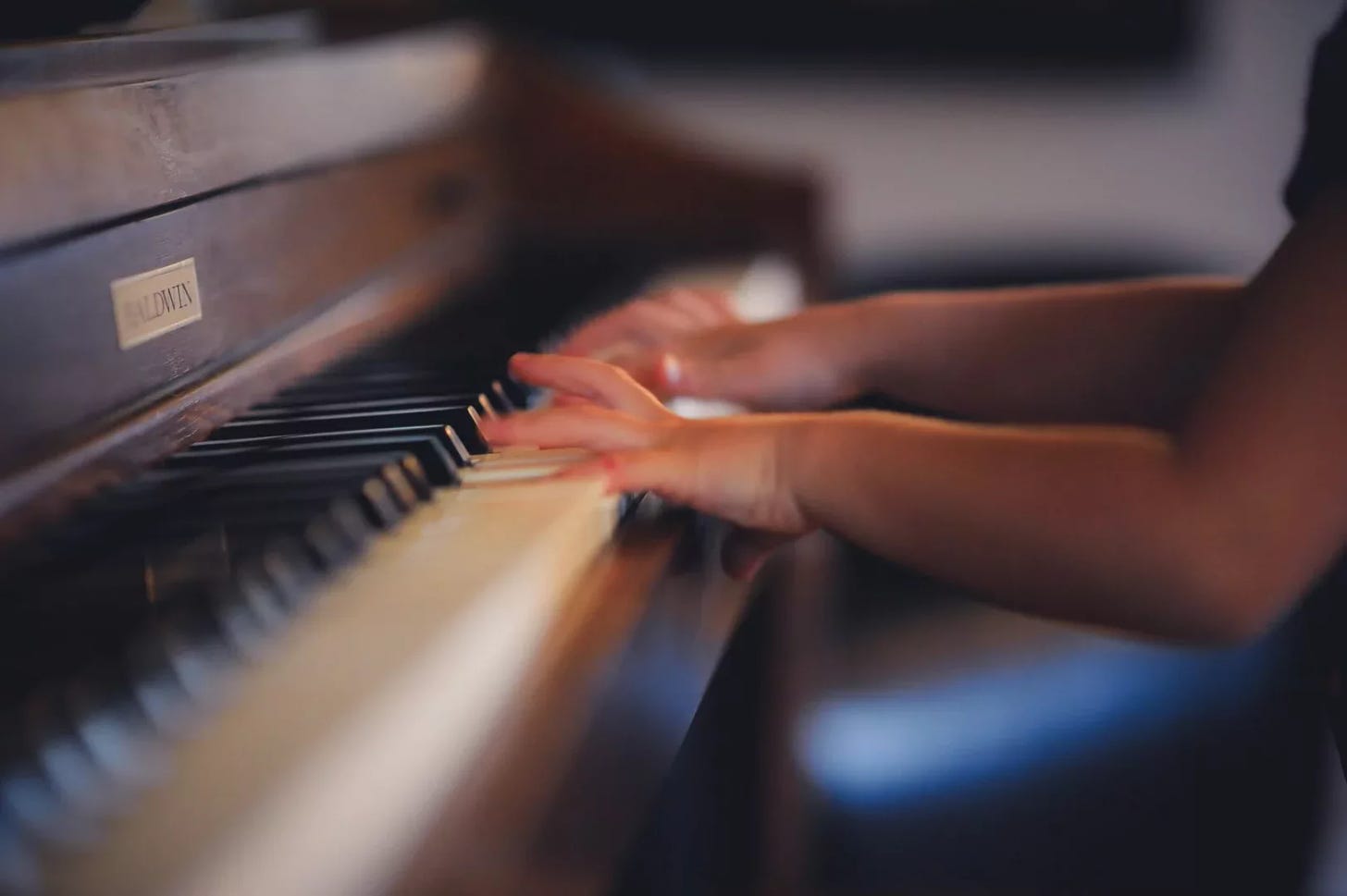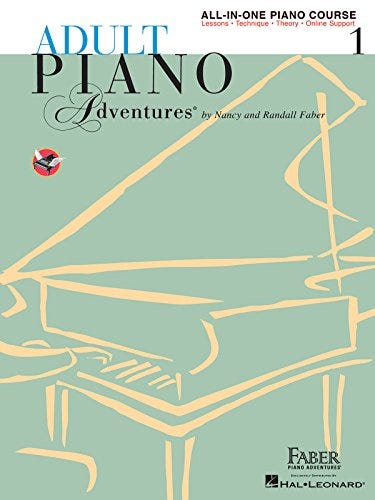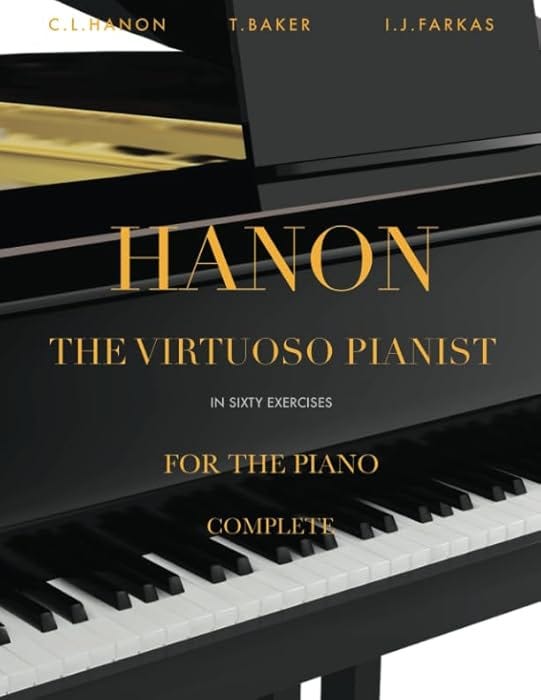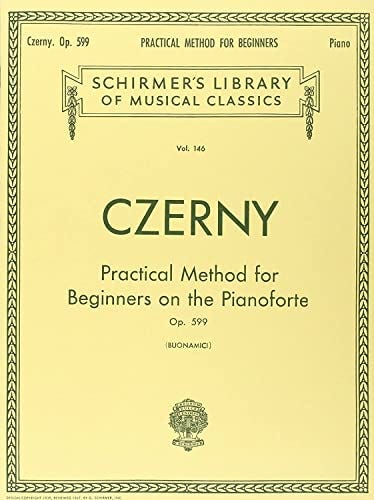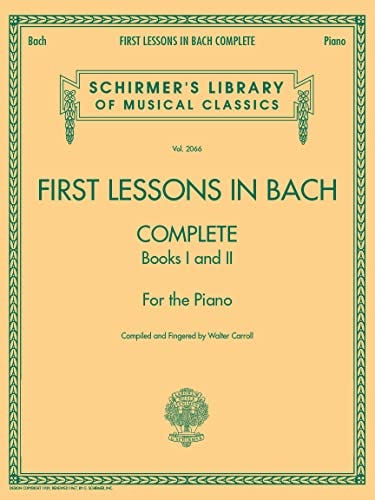The Best Piano Exercises for Beginners
Are you looking for the best piano exercises and scales, that will help you to develop your piano skills as a beginner? Keeping yourself engaged and interested is important so that you keep practicing every day.
Read on to find the best piano exercises, scales, and patterns that you can learn today. Many of these exercises can be played on the guitar and other instruments as well, so happy practicing!
Related:
The Best Online Piano Lessons for Adults
The Best Headphones for Practicing Piano in 2023
The Best Piano Exercises for Beginners
Major Scales
What Is a Major Scale?
A major scale sounds like hope and happiness. When you finish a major scale you will know that it has finished on the right note!
There is a clear and definitive sound of resolution that occurs with the major scale, and you will hear why it is the first scale that students always learn.
C Major Scale
All pianists should begin learning the piano with the major scale starting on middle C. The C major scale is fortunately the simplest scale to learn as well. It uses all of the white notes in order!
The uplifting sound of C major also helps students to map out where notes are on the keyboard. For the C major scale, you play from middle C up to the octave above, and back down.
For a full breakdown of how to play the C scale and all other major and minor scales, plus how to master the fingering techniques including the thumb tuck, check out my article about scales:
Piano Scales for Beginners Guide: All Piano Scales Made Easy
Minor Scales
What Is a Minor Scale?
Minor scales have a very different sound compared to major scales. They have a sad and slightly exotic sound. Jazz musicians use their improvise on songs in minor keys. The minor scale comes in 3 forms.
Natural Minor Scale:
This scale has the same notes as its relative major scale. You can find the relative Minor scale to your Major scales by starting on the ‘6th degree’ or 6th note of any major scale.
When playing C major, the 6th note you play will be an A. Start your C major scale on the A instead of the C and finish on the A an octave above.
Use the same fingering for this scale as you did with the C major scale, implementing the ‘thumb tuck’ technique. You have now played your first Natural minor scale!
The Natural Minor is also the same scale as the ‘Aeolian mode’ from the modes of the Major scale. Modes are scales you can explore if you have an interest in jazz or want to add to your arsenal of scales to practice.
Harmonic Minor Scale
The harmonic minor scale is derivative of the minor scale where the seventh scale degree is raised by a half step.
This is an important scale that is used over Minor-Major chords, with a Minor 3rd and a Major 7th. It can also be used for dissonance or chromatic passing tones on minor chords.
The Melodic Minor Scale
is a minor scale with raised sixth and seventh scale degrees, but only when ascending. A descending melodic minor scale is identical to a natural minor scale. Another useful scale for jazz improvisation. Don’t forget to practice it in all keys!
Triad Chords
Here we come to something a little bit different. Triads are chords made up of 3 notes. You should know that there are major, minor, diminished, and augmented triads. Learning all of these in all keys will take some time, but you should play them in both hands and in patterns ascending and descending as well as in block chords as well.
A major triad is made of a major 3rd followed by a minor 3rd. C major is C, E, and G.
A minor triad is made of a minor 3rd followed by a major 3rd. C minor is C, Eb, and G.
An augmented triad is made of two major triads. C augmented is C, E, and G sharp.
A diminished triad is made up of two minor 3rds. C diminished is C, Eb, and G flat.
Adding an extension (4th note) to these chords gives them a unique sound and changes their names as well. Add a flat 7th to a major chord for example and you have a dominant 7th chord.
On a minor chord (flat 3rd) you would have a minor 7th chord. Learn your triads first and then go on to learn your minor 7th, dominant, or flat 7th and major 7th chords.
How Long Does It Take To Learn the Piano?
Take your time! Just as Rome wasn’t built in a day, you cannot expect to master an instrument quickly.
Learning beginner songs is one thing, but without proper technique to develop your skills with both hands on the piano, you will struggle to progress onto harder and more complex pieces of music.
You need to practice, practice, practice! Piano exercises are like exercises in the gym, they need to be repeated frequently to see (and hear) the results! Playing scales and piano exercises should become part of your daily practice routine if you want to see results.
Learning the Piano for Adults
For adults, learning the piano may be a slightly different process than for children.
While it is true that children are like sponges, and can soak up more information in a shorter period, adults are equally capable of learning an instrument if they dedicate their time to the task.
The cognitive benefits of learning an instrument are vast for both adults and children and learning to play the piano is a rewarding experience for anyone who tries their hands at it (pardon the pun).
Adults also tend to have jobs and therefore money, which means they can purchase the best books, apps, online courses, and more.
To learn more about the best ways for adults to learn the piano, check out the following article:
The Best Way to Learn Piano for Adults: Books, Apps, & Courses
With that said, let’s look at some of the most popular scales and exercises that you can start with to develop your playing.
Adult Piano Adventures
Check out this all-in-one piano course for beginners! This book covers the fundamentals of piano playing, teaches you to sight read music, and how to play chords and melody in both hands.
Hanon Exercises
The Hanon exercises are famous piano technique exercises that have been around for over a hundred years! They were first published in 1873 by Charles-Louis Hanon himself, in a book titled ‘The Virtuoso Pianist’.
The books containing these piano exercises have sold millions of copies and are a proven method for improving your skills.
It is recommended to practice the Hanon exercises every day. This will improve your finger strength and finger independence.
The fundamentals of piano playing you gain from the Hanon exercises have proven useful for all age groups, but are especially effective for children. The 60 exercises have been transcribed into all keys, and you can buy them on Amazon here:
Czerny
Czerny was a famous pianist who learned from Beethoven and was a piano teacher for Franz Liszt, yet he only performed in public a handful of times.
He is known for creating The Practical Method for Beginners. Similar to the Hanon exercises, these are practice exercises that will develop your piano skills, finger strength, dexterity, and independence.
A common mistake when learning an instrument is to try and speed the process up and skip steps. These exercises go from beginner to intermediate and advanced, so you should work through these gradually and not rush or try to skip any before moving on.
Remember that with the Czerny and Hanon exercises you are developing the skills needed to play harder and more complex pieces, from the great pianists of the classical and romantic eras of music.
You will develop the skills you need to be a concert pianist if you progress through these and work on classical pieces as well. You can find the Czerny book on Amazon here:
Bach
Few classical works train the mind and your musicianship as completely as Bach. You can get lost for hours learning the intricate patterns and shapes in his music, and managing the left and right-hand parts on the piano is a real challenge in many pieces.
Practicing Bach’s music is not something that is only for pianists though. They are fantastic pieces for your finger independence and two-handed independence on the piano, but many sound great on the guitar as well.
The Goldberg variations are some of the most famous Bach pieces that you can learn, though getting the pieces up to speed and sounding like Glenn Gould’s interpretations will take years of practice.
Many works by Bach are intermediate or professional level, but here are some popular beginner pieces.
Prelude in C
Minuet in G Major
Musette in D Major
You can find beginner Bach pieces in this book on Amazon:
Piano Tutorials
When learning to play the piano as a beginner, utilize YouTube as a resource! The following video is a follow-along guide including some of Bach’s most well-known pieces of music.
12 Bar Blues
Here is a video that I made showing how to play the 12-bar blues!
Conclusion
Hopefully, this article has inspired you to start learning some new exercises and scales on either the piano or guitar. You have many scales and patterns at your fingertips, as well as chords and Bach pieces to learn.
Forming and sticking to a practice routine will be the key to making progress on your instrument, and these exercises and scales will help you build the confidence to take on more complex pieces of music.




